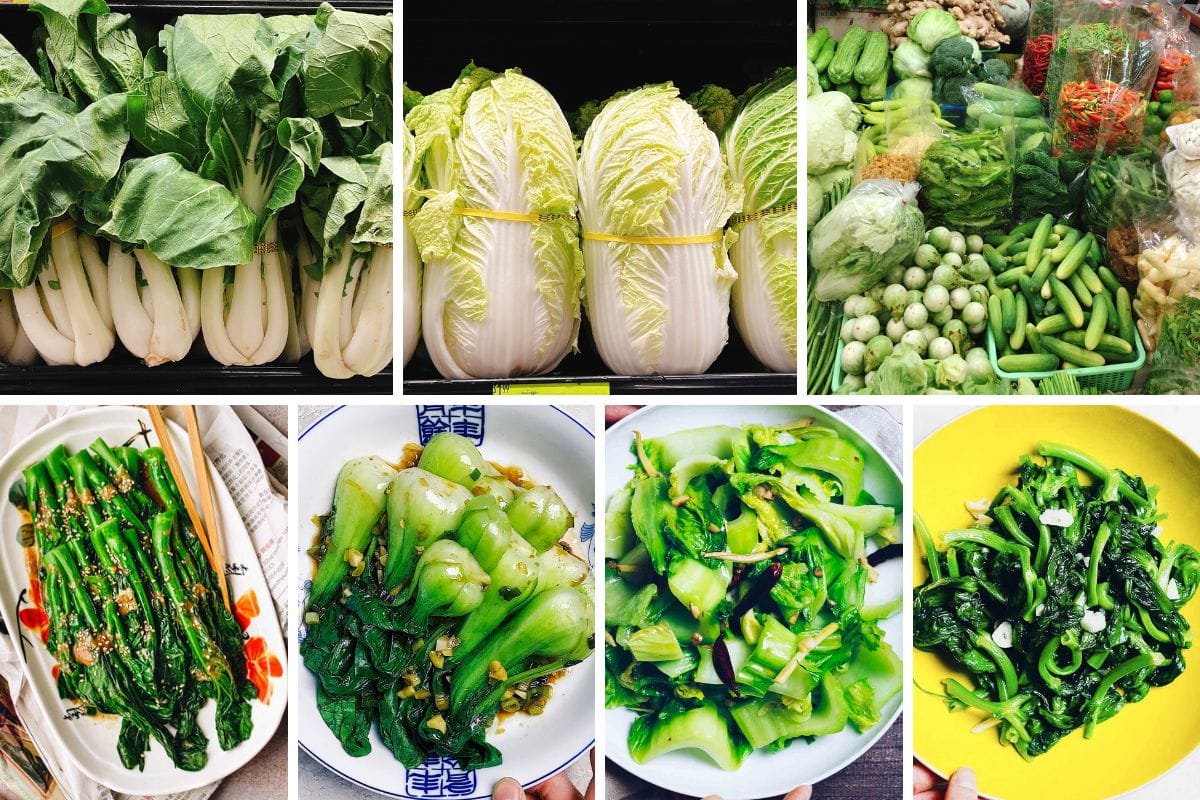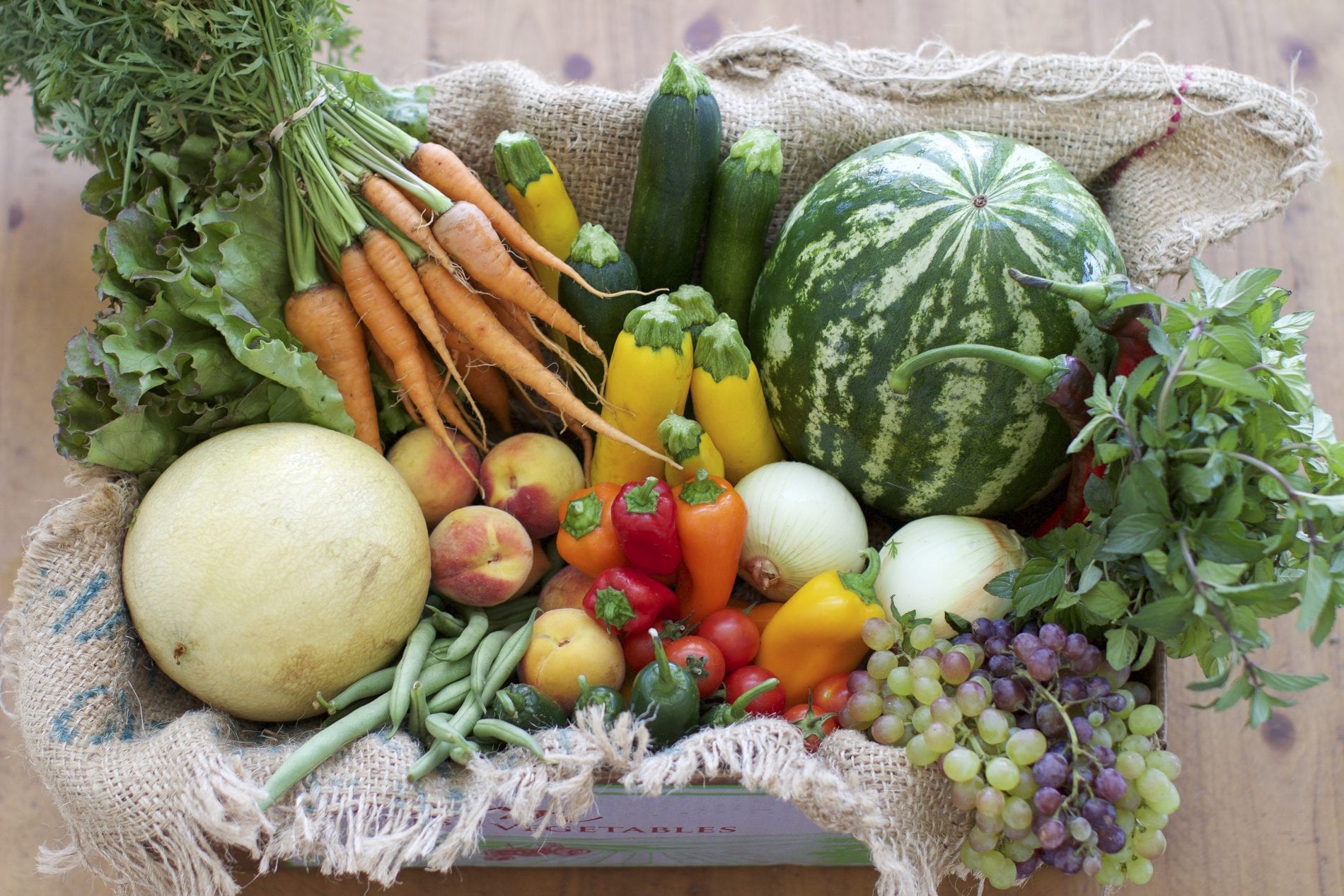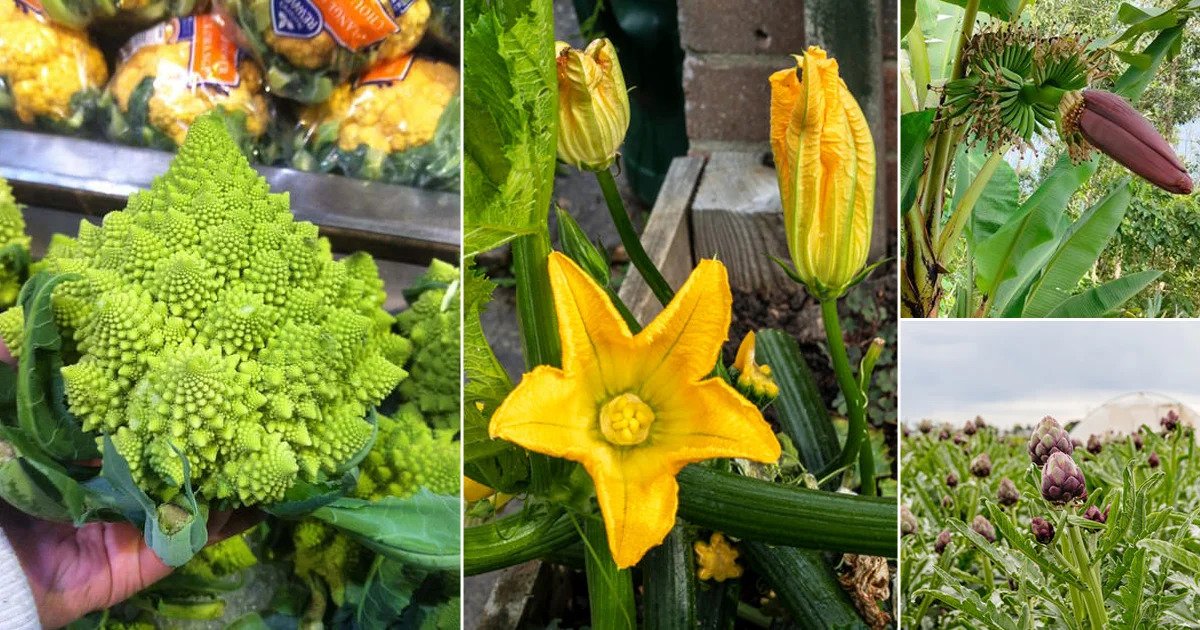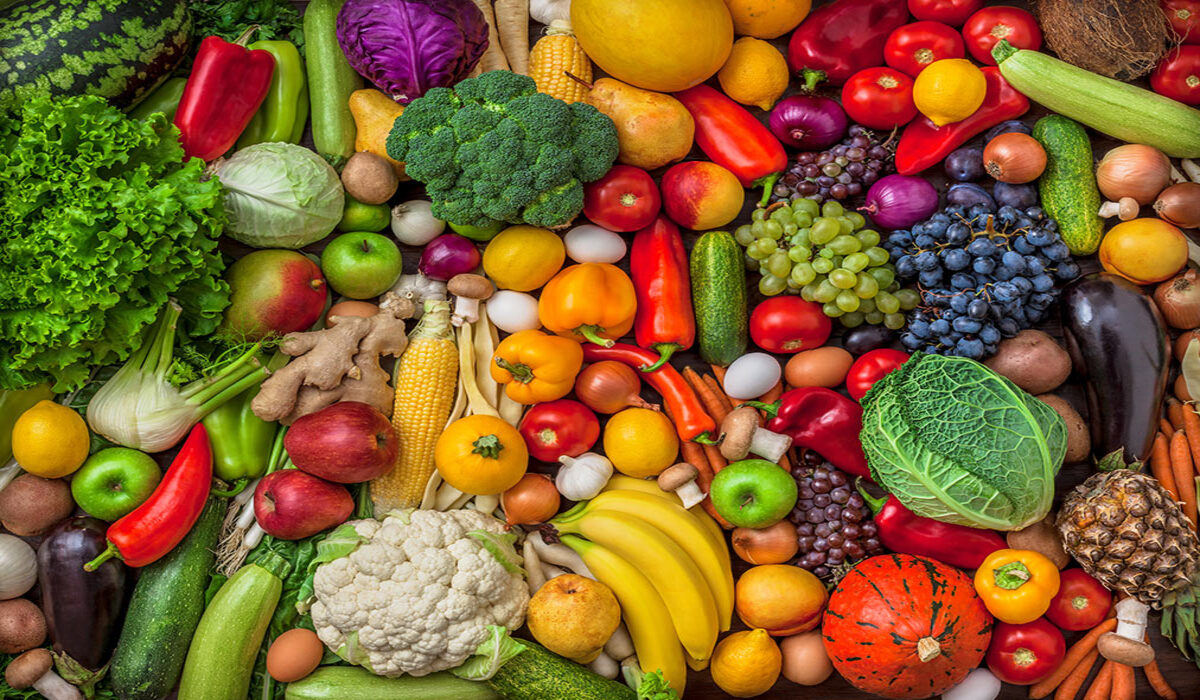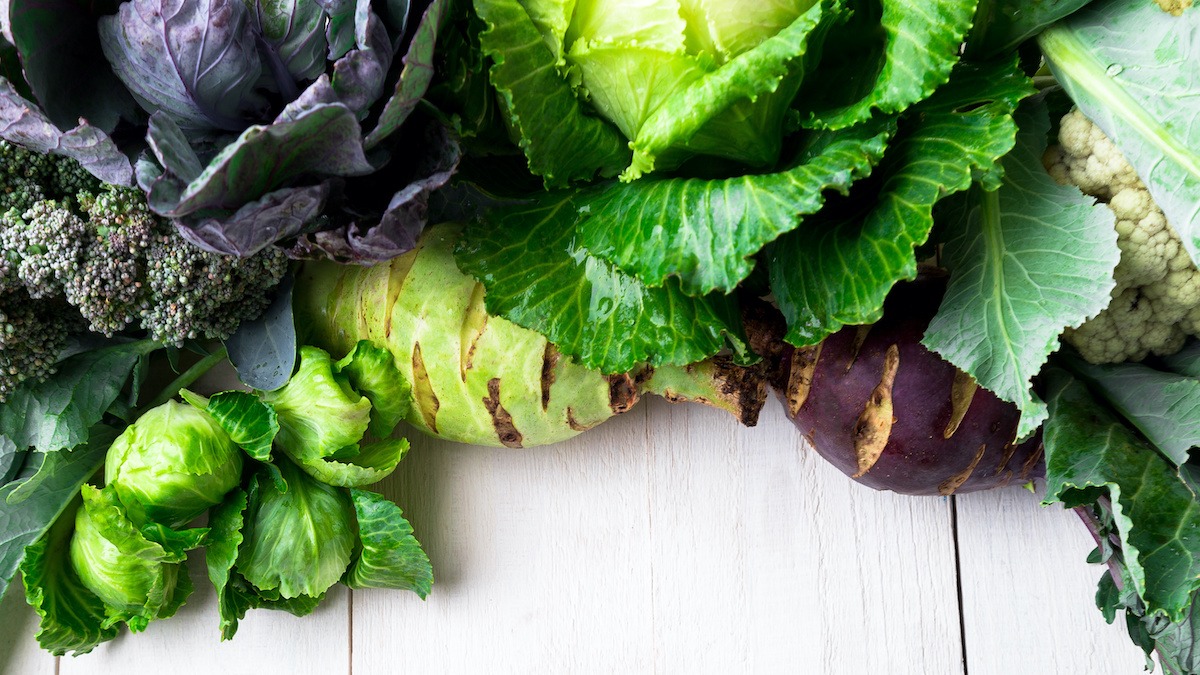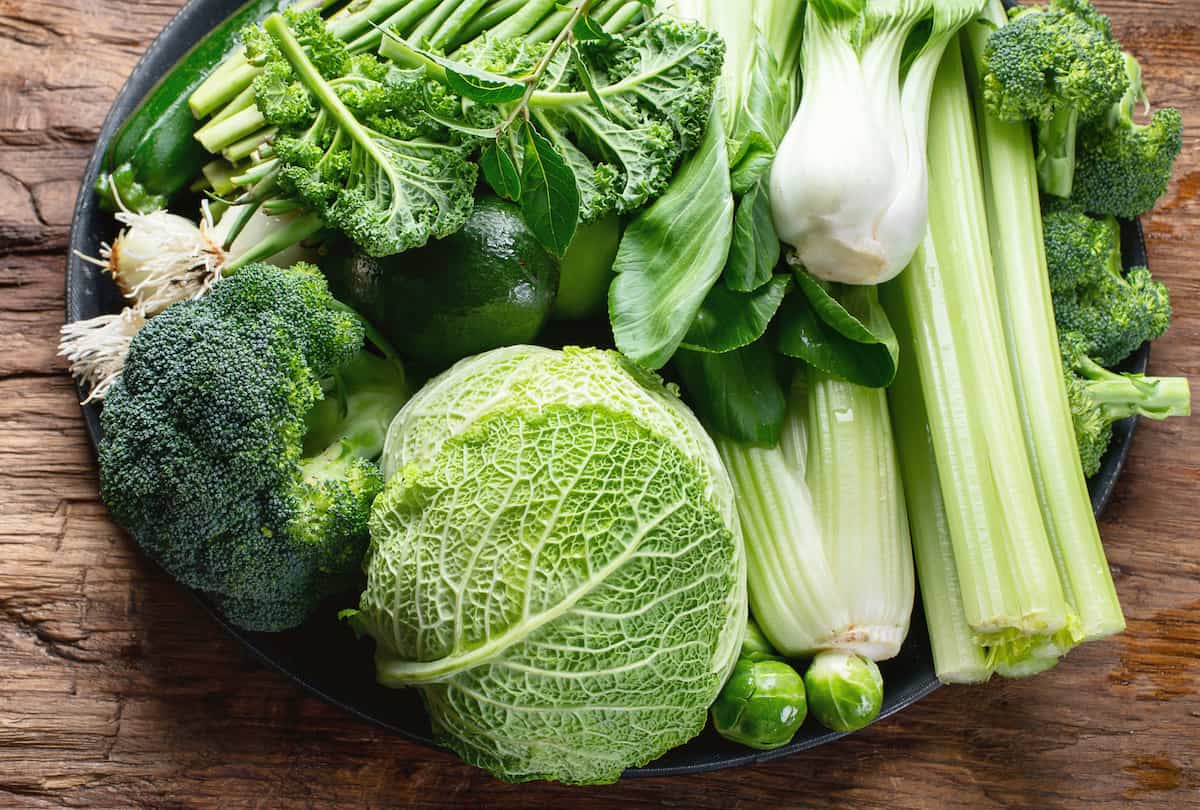Home>Gardening News and Trends>Latest News>What Vegetables Need To Be Refrigerated
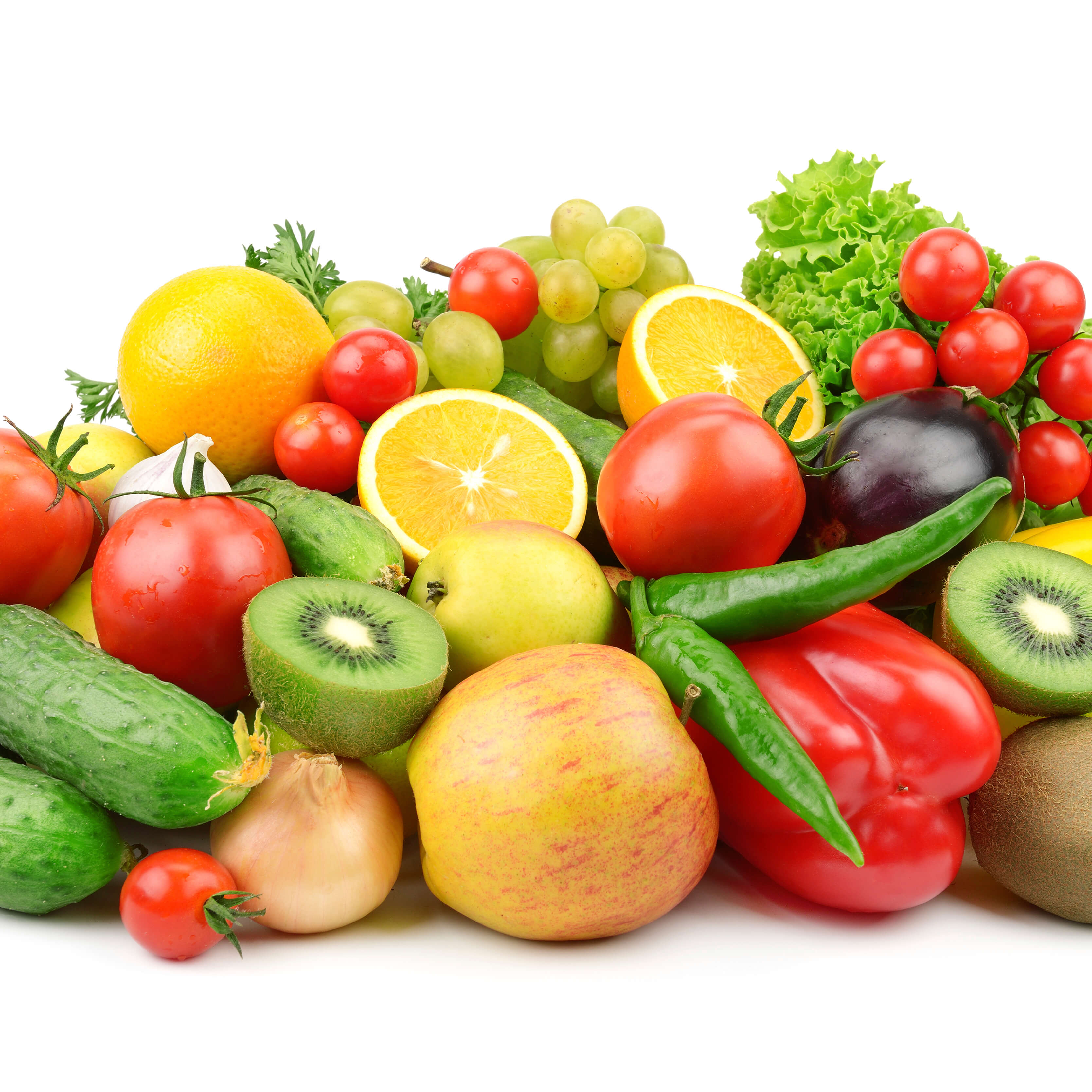

Latest News
What Vegetables Need To Be Refrigerated
Modified: January 22, 2024
Discover the latest news on which vegetables need to be refrigerated. Stay informed to ensure your produce stays fresh and lasts longer.
(Many of the links in this article redirect to a specific reviewed product. Your purchase of these products through affiliate links helps to generate commission for Chicagolandgardening.com, at no extra cost. Learn more)
Table of Contents
Introduction
When it comes to storing vegetables, it can be challenging to know which ones need to be refrigerated. Proper storage not only helps maintain the freshness and flavor of your produce, but it also extends their shelf life. While some vegetables thrive in the cool temperatures of the refrigerator, others are better off stored at room temperature.
Understanding the optimal storage conditions for different types of vegetables is crucial to ensure that they stay crisp, flavorful, and last as long as possible. In this article, we will explore the various vegetables and their storage requirements, helping you make informed decisions and reduce food waste.
Before delving into specific vegetables, it’s important to note that the information provided here is general guidance. Factors such as the freshness of the produce, the maturity of the vegetables when purchased, and individual preferences can influence how long they last. Additionally, it’s always a good idea to check the recommendations on the packaging or consult with your local farmer or grocer for specific storage instructions.
Now, let’s dive into the various types of vegetables and how best to store them to maintain their quality and freshness.
Leafy Greens
Leafy greens, such as lettuce, spinach, kale, and arugula, are delicate vegetables that require proper handling and storage to keep them fresh. These greens are best stored in the refrigerator to help maintain their crispness.
Before storing leafy greens, it’s essential to wash them thoroughly to remove any dirt or impurities. After washing, gently dry the leaves by patting them with a clean kitchen towel or using a salad spinner. Excess moisture can lead to faster spoilage.
Once dried, wrap the leafy greens in a paper towel and place them in a perforated plastic bag or airtight container. The paper towel helps in absorbing moisture and prevents wilting. The perforations in the bag or container allow for proper airflow, which is crucial in preventing the buildup of ethylene gas and maintaining the freshness of the greens.
It’s important to note that leafy greens have varying shelf lives. Delicate greens, such as spinach and arugula, can last for about three to four days, while heartier ones like kale and romaine lettuce can stay fresh for up to a week. Be sure to check for any signs of wilting or discoloration and discard any spoiled leaves promptly.
If you have an excess amount of leafy greens and want to prolong their freshness, consider blanching and freezing them. Blanch the greens by briefly submerging them in boiling water, followed by an ice bath to halt the cooking process. Once blanched, drain the excess moisture and store the greens in labeled freezer bags. They can be stored in the freezer for several months and added to soups or stir-fries when needed.
Remember, not all leafy greens are created equal, and their storage requirements may differ slightly. However, by following these general guidelines, you can ensure that your leafy greens stay crisp and flavorful for longer.
Root Vegetables
Root vegetables, like carrots, beets, radishes, and potatoes, are hearty and versatile vegetables that can be stored for extended periods. These underground gems thrive in a cool and dark environment, making refrigeration unnecessary for most of them.
When storing root vegetables, start by trimming any excess foliage or greens. Removing the greens helps prevent the roots from losing moisture quickly. However, if the greens are fresh and vibrant, you can save and use them in salads or other dishes.
Before storing, ensure that the roots are free from any dirt and debris. Gently wash them under running water to remove any soil, being careful not to scrub too harshly. Once cleaned, thoroughly dry the vegetables before storage.
For optimal storage, place the root vegetables in a cool, dark, and well-ventilated space. A pantry, basement, or cellar works best for this purpose. An additional tip is to store different types of root vegetables separately, as some tend to release ethylene gas, which can cause spoilage in other vegetables.
While refrigeration is generally not recommended for root vegetables, there are exceptions. For instance, if you live in a warm climate or during hot summer months, refrigerating certain root vegetables like carrots can help keep them fresh and crisp for longer. However, be mindful that refrigeration can sometimes cause the vegetables to become soft or develop an off-flavor.
When properly stored, most root vegetables can last for several weeks to a few months. Regularly check for any signs of decay or sprouting and promptly remove any spoiled or damaged vegetables to prevent the spread of spoilage to the rest of the batch.
Remember that some root vegetables, such as onions and garlic, have their own specific storage requirements, which we will explore in more detail later in this article. By understanding the storage preferences of root vegetables, you can enjoy their flavors and nutritional benefits for a longer duration.
Cruciferous Vegetables
Cruciferous vegetables, including broccoli, cauliflower, cabbage, and Brussels sprouts, are packed with nutrients and offer a wide range of health benefits. These vegetables have distinct storage requirements that can help preserve their flavor and texture.
When storing cruciferous vegetables, it’s crucial to keep them cool and moist. Start by trimming any excess leaves or stems and removing any damaged or discolored parts. Next, rinse the vegetables thoroughly under cool water to remove any dirt or debris.
After rinsing, you have two storage options for cruciferous vegetables: refrigeration or a cool, dark pantry. If you choose to refrigerate the vegetables, wrap them loosely in a damp paper towel or place them in a perforated plastic bag to maintain moisture. The dampness helps prevent wilting while the perforation allows for proper airflow. Refrigerated cruciferous vegetables can typically last for about a week.
If refrigeration is not an option, you can store these vegetables at room temperature in a cool and dark pantry. To maintain moisture, place the vegetables in a bowl or tray lined with a damp paper towel, ensuring they are not overcrowded. Check the vegetables regularly for any signs of spoilage or wilting, and discard any damaged or spoiled portions promptly.
It’s worth noting that some cruciferous vegetables, such as Brussels sprouts and broccoli, can benefit from blanching before storage. Blanching involves briefly immersing the vegetables in boiling water, followed by an ice bath to preserve their color and texture. Once blanched, drain the excess moisture and store in airtight containers or freezer bags in the freezer for future use.
Whether you choose to refrigerate or store them at room temperature, it’s important to keep cruciferous vegetables separate from other produce. They have a distinct odor and can release ethylene gas, which may cause neighboring vegetables to spoil quickly.
By following these storage guidelines, you can enjoy fresh and flavorful cruciferous vegetables for longer periods, incorporating their nutritional benefits into your meals.
Peppers
Peppers, whether they are bell peppers, jalapenos, or chili peppers, are vibrant and versatile vegetables commonly used in various cuisines. Proper storage is essential to maintain their freshness and crispness.
When it comes to storing peppers, the general recommendation is to keep them at room temperature. This is especially true if you plan on using them within a few days. Peppers can be stored on the kitchen counter or in a cool and dry pantry away from direct sunlight. Make sure to choose a well-ventilated area to prevent moisture buildup.
However, if you have an abundance of peppers or want to extend their shelf life, refrigeration is an option. Before refrigerating, it’s important to note that refrigeration can cause the peppers’ texture to soften slightly. To mitigate this, consider placing the peppers in a perforated plastic bag or wrapping them loosely in a paper towel to absorb excess moisture.
If you have cut or sliced peppers that you want to store, refrigeration is the best option. Place the cut peppers in an airtight container or resealable bag and store them in the refrigerator. Properly stored, cut peppers can last for up to a week.
If you find yourself with an excess of peppers, one convenient way to store them for future use is by freezing. Wash, seed, and cut the peppers into desired shapes (slices, dices, or strips) before freezing. Spread them out on a baking sheet and flash freeze for an hour. Once frozen, transfer the peppers to labeled freezer bags or containers. Frozen peppers can be used in soups, stews, stir-fries, or sauces, and can last for up to six months in the freezer.
Regardless of whether you choose to store peppers at room temperature or refrigerate them, it’s important to regularly check for signs of spoilage. Discard any peppers that show signs of mold or soft spots to prevent the spread of decay to the rest of the batch.
By storing peppers properly, you can enjoy their vibrant colors, crispness, and flavors, adding a delicious touch to your culinary creations.
Tomatoes
Tomatoes are juicy and versatile fruits that are a staple in many dishes. Proper storage is crucial to maintain their texture and flavor.
Unlike most vegetables, tomatoes are best stored at room temperature. Refrigeration can cause the tomatoes to lose their flavor and become mealy in texture. Find a cool, dry spot in your kitchen away from direct sunlight and store the tomatoes stem-side up to prevent moisture loss.
However, if your tomatoes are fully ripe and you need to slow down their ripening process, you can place them in the refrigerator. Keep in mind that refrigerated tomatoes may lose some flavor, so it’s best to consume them within a few days of refrigeration.
It’s important to note that if your tomatoes are still unripe, you should keep them out of the refrigerator. Cold temperatures can impede the ripening process, leading to tomatoes that never reach their full flavor potential. Instead, place them in a paper bag with a ripe banana or apple to expedite ripening. The ethylene gases emitted by the banana or apple will help speed up the ripening process of the tomatoes.
Once tomatoes have ripened and are at their peak, they can be used immediately or stored at room temperature for a few days. If you have excess ripe tomatoes, you can preserve them by canning or making homemade tomato sauce.
To prepare tomatoes for canning, start by blanching them in boiling water for about a minute and then transferring them to an ice bath to cool. Once cooled, remove the skins and core the tomatoes before canning in jars with a preserving liquid. Properly canned tomatoes can last for up to a year when stored in a cool, dark pantry.
For homemade tomato sauce, start by blanching and peeling the tomatoes. Puree the tomatoes in a food processor or blender, and then simmer the sauce in a pot with your desired seasonings until it thickens. Allow the sauce to cool before storing it in airtight containers or freezer bags. Frozen tomato sauce can last for several months.
Remember to always inspect your tomatoes for any signs of spoilage, such as mold, soft spots, or unusual discoloration. Discard any spoiled tomatoes to prevent the spread of decay.
By storing tomatoes properly, you can savor their rich taste and vibrant color in your salads, sauces, and various other dishes.
Cucumbers
Cucumbers are refreshing and hydrating vegetables that are a popular addition to salads, sandwiches, and even as a healthy snack on their own. Proper storage is essential to retain their crispness and flavor.
When storing cucumbers, it’s important to keep them cool and hydrated. Cucumbers are best stored in the refrigerator, as the cool temperature helps maintain their firmness and slows down the natural softening process.
Before refrigerating, ensure that the cucumbers are dry. If they are damp, gently pat them dry with a paper towel to remove any excess moisture. Excess moisture can accelerate spoilage, causing the cucumbers to become mushy or develop mold.
To prevent moisture loss and maintain the cucumber’s texture, store them in a perforated plastic bag or wrap them loosely in a paper towel. The perforations allow for proper airflow, while the paper towel helps absorb any excess moisture.
If you have partially used cucumbers, wrap the cut portion tightly in plastic wrap or place it in an airtight container. This will help preserve the freshness of the remaining cucumber and prevent it from drying out.
While cucumbers are generally best stored in the refrigerator, remember to use them within a week or two. Over time, cucumbers can become spongy and lose their crispness, even in the refrigerator. If you notice any signs of decay, such as soft spots or sliminess, discard the cucumber to prevent the spread of spoilage.
If you have an abundance of cucumbers and want to enjoy them beyond their peak freshness, you can pickle them. Pickling cucumbers involves soaking them in a vinegar-based brine along with various seasonings. This preserves the cucumbers, giving them a tangy and flavorful kick. Pickled cucumbers can be stored in the refrigerator for several weeks.
By storing cucumbers in the refrigerator and keeping them dry, you can enjoy their cool and crunchy goodness in your favorite dishes for an extended period.
Summer Squash
Summer squash, including varieties like zucchini and yellow squash, are tender and versatile vegetables that are abundant during the warm months. Proper storage is key to preserving their freshness and flavor.
When storing summer squash, it’s important to keep them cool and dry. These vegetables are best stored in the refrigerator, as the cool temperature helps maintain their texture and prevents them from wilting or becoming mushy.
Before refrigerating, thoroughly wash the summer squash under cool running water to remove any dirt or debris. Dry them well with a clean kitchen towel or paper towel to remove excess moisture. Excess moisture can lead to quicker spoilage.
Once dry, you can store summer squash in the refrigerator crisper drawer or in perforated plastic bags. The perforations allow for proper airflow, preventing the buildup of moisture. Alternatively, you can wrap the squash loosely in a paper towel and place them in an airtight container.
It’s important to note that summer squash has a relatively short shelf life compared to some other vegetables. Depending on the freshness of the squash at the time of purchase, they can last anywhere from three to seven days in the refrigerator. Regularly check for any signs of decay, such as mold or soft spots, and discard any spoiled squash promptly to prevent the spread of spoilage.
If you find yourself with an abundance of summer squash and want to prolong their shelf life, consider freezing them. To freeze summer squash, start by blanching them briefly in boiling water for a couple of minutes. This helps preserve their color and texture. After blanching, cool the squash in an ice bath, pat them dry, and slice or cut them into your desired shapes. Place the pieces in freezer-safe containers or bags and store them in the freezer for up to six months.
By storing summer squash properly in the refrigerator or freezing them for later use, you can enjoy their delicate flavor and tender texture in a variety of dishes, from stir-fries and salads to grilled vegetable medleys.
Eggplant
Eggplant is a versatile vegetable known for its rich and meaty texture. Proper storage is key to maintain its flavor and prevent it from becoming mushy.
When it comes to storing eggplant, it is generally best to keep them at room temperature. However, if you plan on using them within a day or two, they can be stored in the refrigerator to prolong their freshness.
Before storing, ensure that the eggplant’s skin is smooth and shiny. Avoid any eggplants with wrinkled or discolored skin, as it may indicate age or spoilage. If necessary, gently wipe the eggplant’s skin with a damp cloth to remove any dirt or grime.
To store eggplant at room temperature, place them in a cool and well-ventilated spot, away from direct sunlight. You can arrange them in a single layer or store them in a basket or ventilated container. Avoid stacking or overcrowding the eggplants, as this can lead to bruising or premature spoilage.
If you need to store eggplant for longer periods or in hot climates, refrigeration can be an option. Before refrigerating, wrap the eggplant in a paper towel and place it in a loosely sealed plastic bag. The paper towel helps absorb excess moisture, while the bag provides a controlled environment.
It’s worth noting that refrigeration can sometimes cause the eggplant’s texture to become slightly mushy. Therefore, it’s best to use refrigerated eggplants within a few days.
If you have an abundance of eggplants and want to prolong their shelf life, you can consider freezing them. Start by blanching the eggplant in boiling water for a couple of minutes, followed by an ice bath to cool them quickly. Once cooled, drain the excess moisture and store the blanched eggplant in airtight containers or freezer bags. Frozen eggplant can last for up to six months in the freezer, though the texture may change slightly upon thawing.
Remember to regularly inspect your eggplants for any signs of spoilage, such as soft spots or mold. Discard any spoiled eggplants to prevent the spread of decay to the other vegetables.
By storing eggplants appropriately, you can enjoy their unique taste and texture in various dishes, from hearty mains to flavorful side dishes.
Potatoes and Sweet Potatoes
Potatoes and sweet potatoes are starchy vegetables that are pantry staples in many households. Proper storage is essential to preserve their quality and prevent them from sprouting or spoiling.
Both potatoes and sweet potatoes should be stored in a cool, dark, and well-ventilated space. Aim for a temperature between 45°F to 50°F (7°C to 10°C). Avoid storing them in the refrigerator, as the cold temperature can convert the potato starch into sugar, resulting in a sweeter and less desirable taste. The refrigerator can also cause the sweet potatoes to develop a hard, unappetizing center.
If you have a cool basement or cellar, that can be an ideal storage location. Alternatively, a pantry or a cupboard away from direct sunlight works well too. Just make sure the area is well-ventilated to prevent the buildup of moisture.
Before storing potatoes and sweet potatoes, inspect them for any signs of damage or decay. Remove any spoiled or bruised ones, as they can speed up the spoiling process of other potatoes. If you notice any sprouting, it’s best to use those potatoes first, as they won’t store as long as sprout-free ones.
It’s beneficial to store potatoes and sweet potatoes separately. Potatoes release ethylene gas, which can cause sweet potatoes to spoil or sprout more quickly. To keep them separated, you can use different storage containers or place them in different areas of the pantry or cellar.
To extend the shelf life of potatoes, avoid washing them before storage. The dirt on their skin acts as a protective barrier, helping to keep them fresh. When you’re ready to use them, rinse them under running water to remove the dirt.
Sweet potatoes, on the other hand, should be gently washed and dried before storage to remove any dirt or debris. Handle them with care, as they are more delicate than regular potatoes.
By following these storage guidelines, you can enjoy fresh, quality potatoes and sweet potatoes for an extended period, ensuring that they are ready to be used in your favorite recipes.
Onions and Garlic
Onions and garlic are aromatic vegetables that add flavor to a wide range of dishes. Proper storage is crucial to maintain their freshness and prevent them from spoiling.
When it comes to storing onions and garlic, a cool and dry environment is key. Both vegetables require good airflow to prevent moisture buildup, which can lead to mold and spoilage.
Onions should be stored in a well-ventilated area. A pantry or cellar is an ideal location as long as it is cool and dark. Storage baskets or mesh bags are great for onions, as they allow for proper air circulation. Avoid storing onions near potatoes, as they can cause each other to spoil faster.
It’s important to note that onions are sensitive to humidity. Therefore, it’s best to avoid storing them in sealed plastic bags or containers, as this can trap moisture and lead to rotting.
Garlic, on the other hand, should be stored at room temperature in a cool and dry place. An open, breathable container or a mesh bag works well for garlic storage. Avoid storing garlic in the refrigerator, as the cold temperature and excess moisture can cause it to sprout or become moldy.
To prevent sprouting, it’s crucial to store both onions and garlic in a cool and dry environment. Exposure to sunlight can also cause both vegetables to sprout, so make sure to store them away from direct light.
If your onions or garlic have been cut or partially used, wrap them tightly in plastic wrap or store them in an airtight container before refrigerating. However, keep in mind that refrigeration can sometimes alter the texture and flavor of onions and garlic. It’s best to use them within a few days of cutting to retain optimal taste.
Keep an eye on your stored onions and garlic, and regularly check for any signs of soft spots, mold, or decay. Discard any spoiled ones to prevent the spread of spoilage to the rest of your stored vegetables.
By storing onions and garlic properly, you can ensure that they stay fresh and aromatic, ready to add depth and flavor to your favorite savory dishes.
Mushrooms
Mushrooms are delicate and versatile fungi that can elevate the flavors of various dishes. Proper storage is essential to maintain their freshness and prevent them from becoming slimy or spoiling.
When it comes to storing mushrooms, it’s best to keep them in a cool and dry environment. Avoid storing them in a sealed plastic bag or container, as this can trap moisture and expedite spoilage.
Instead, transfer the mushrooms to a paper bag or store them in a damp paper towel to help maintain their moisture balance. The paper bag allows for air circulation, while the paper towel helps absorb excess moisture, preventing the mushrooms from becoming slimy. Be sure to lightly close the paper bag, allowing for some airflow. Alternatively, you can use a breathable container that has holes or perforations for air circulation.
It’s important to note that mushrooms are highly prone to moisture absorption, so it’s best to avoid washing them until you are ready to use them. Prior to storing, gently brush off any dirt or debris with a soft brush or a damp cloth. Washing mushrooms can cause them to become mushy and lose their texture.
When it comes to refrigeration, it’s generally recommended to store mushrooms in the main compartment, not the crisper drawer. The crisper drawer tends to have higher humidity, which can cause condensation and hasten spoilage. Avoid overcrowding the mushrooms, as this can also contribute to excess moisture buildup.
If you have excess mushrooms that you want to preserve, you can consider drying or freezing them. To dry mushrooms, slice them thinly and lay them out in a single layer on a tray or a baking sheet. Place the tray in a well-ventilated area or use a food dehydrator to dry the mushrooms until they become crispy. Once dried, store them in an airtight container in a cool and dry place.
If freezing mushrooms, it’s recommended to first blanch them briefly in boiling water for a couple of minutes, followed by an ice bath to cool them quickly. Once cooled, drain the excess moisture and transfer the blanched mushrooms to freezer-safe containers or bags. Frozen mushrooms can be used in soups, stews, or stir-fries directly from the freezer.
Regularly check your stored mushrooms for any signs of decay or mold. Discard any mushrooms that have become slimy or show signs of spoilage to prevent the spread to others.
By storing mushrooms properly, you can enjoy their unique flavors and textures, adding depth and earthiness to your culinary creations.
Fresh Herbs
Fresh herbs are fragrant and flavorful additions to culinary dishes, providing a burst of freshness and enhancing the overall taste. Proper storage is crucial to preserve their aroma and prevent them from wilting or deteriorating quickly.
When it comes to storing fresh herbs, there are a few methods depending on the variety and their condition:
1. Refrigeration:
– For hardier herbs like rosemary, thyme, and sage, wrap them loosely in a damp paper towel and place them in a perforated plastic bag or an airtight container. The moisture from the damp paper towel helps keep the herbs hydrated and crisp in the refrigerator. These herbs can typically last for one to two weeks when stored this way.
– For delicate herbs like parsley, cilantro, and dill, it’s best to treat them like a bouquet of flowers. Trim the ends of the stems, then place the herbs upright in a glass or container filled with an inch or two of water. Loosely cover the herbs with a plastic bag and secure it with a rubber band. This creates a mini greenhouse effect, extending their freshness. Change the water every few days and the herbs can last up to a week in the refrigerator.
2. Freezing:
– Freezing is an excellent method to preserve the flavor of fresh herbs for an extended period. Wash and thoroughly dry the herbs, then chop or mince them. Place the herbs in ice cube trays and cover them with water or olive oil. Once frozen, transfer the herb cubes into airtight containers or freezer bags. Frozen herbs can be conveniently added to dishes as needed and can last for several months.
3. Drying:
– Drying herbs is a traditional method of preserving them. Bundle a small bunch of herbs together with a string or rubber band and hang them upside down in a warm and well-ventilated area. Once completely dry, remove the leaves from the stems and store them in airtight containers in a cool, dark place. Dried herbs can retain their flavor for up to a year.
Regardless of the storage method, it’s important to inspect the herbs regularly for any signs of wilting, mold, or discoloration. Remove any damaged or spoiled leaves to prevent the spread of decay to the rest of the herbs.
By storing fresh herbs properly, you can enhance the flavors of your dishes and enjoy the aromatic essence they bring to your culinary creations.
Conclusion
Proper storage of vegetables is crucial for maintaining their freshness, flavor, and nutritional value. By understanding the specific storage requirements of different vegetables, you can reduce food waste and enjoy their optimal quality for longer periods.
Leafy greens such as lettuce, spinach, and kale thrive in the refrigerator, stored in a paper towel and perforated bag. Root vegetables like carrots and potatoes prefer a cool, dark pantry or cellar, away from moisture. Cruciferous vegetables such as broccoli and cauliflower require refrigeration, wrapped in a damp paper towel. Peppers can be stored at room temperature or refrigerated, depending on how quickly you plan to use them.
Tomatoes should be stored at room temperature to maintain their flavor, while cucumbers do well when refrigerated to retain their crispness. Summer squash can be stored in the refrigerator for a short time, while eggplants are best kept at room temperature. Onions and garlic should be stored in a cool, dry space, away from direct light and with good ventilation. Mushrooms benefit from cool, dry storage, preferably in a paper bag or breathable container. Fresh herbs require either refrigeration in a damp towel or a water-filled container, or can be dried or frozen for longer storage.
Remember to regularly inspect your stored vegetables for any signs of spoilage and discard any damaged or moldy ones to prevent the spread of decay. Be aware that individual vegetables may have slightly different storage preferences, so always consult specific recommendations for optimal storage.
By following these guidelines, you can make the most of your vegetable purchases, reduce waste, and enjoy fresh and flavorful vegetables in your meals for an extended period of time.

